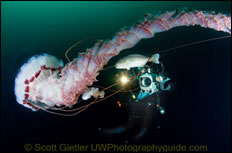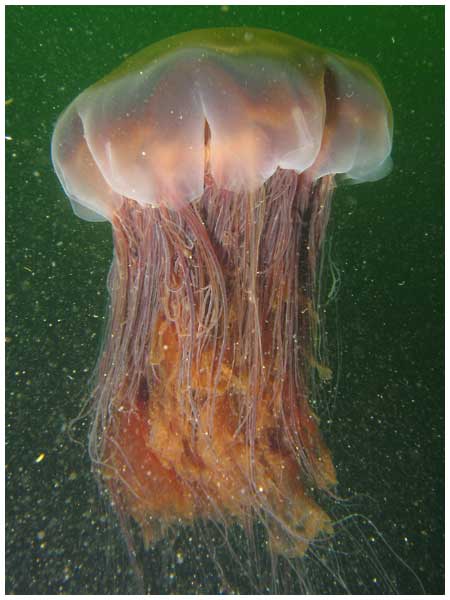Famed Galapagos tortoise to be embalmed, displayed
– Tue, Jun 26, 2012
QUITO, Ecuador (AP) — The beloved Galapagos Islands giant tortoise known as Lonesome George will remain a tourist attraction even in death.
Ecuador's environment minister says the reptile that became a symbol of disappearing species will be embalmed and placed on display on Santa Cruz island.Minister Marcela Aguinaga told reporters Tuesday that an autopsy determined that Lonesome George died of old age. He was believed to be about 100 years old. He was found dead Sunday.Lonesome George was the last of the Pinta Island giant tortoise subspecies, and he failed to leave offspring despite the best efforts of conservationists.He was discovered in 1972 discovery on Pinta Island and became an ambassador of sorts for the archipelago off Ecuador's coast whose unique flora and fauna helped inspire Charles Darwin's ideas on evolution.
Lonesome George was a Pinta Island tortoise, a subspecies of Galápagos giant tortoise (Chelonoidis nigra):
The Pinta Island tortoise[2] (Chelonoidis nigra abingdonii[1][3]), also known as the Pinta giant tortoise,[1] Abingdon Island tortoise,[4] or Abingdon Island giant tortoise,[1] was a subspecies of Galápagos tortoise native to Ecuador's Pinta Island.[5]Maybe there's hope yet.
The subspecies was described by Albert Günther in 1877 after specimens arrived in London. By the end of the 19th century, most of the Pinta Island tortoises had been wiped out due to hunting.[6] By the mid-20th century, it was assumed that the species was extinct[citation needed] until a single male was discovered on the island in 1971. Efforts were made to mate the male, named Lonesome George, with other subspecies, but no viable eggs were produced. Lonesome George died on June 24, 2012. The subspecies is believed to have become extinct; however, there has been at least one first-generation hybrid individual found outside Pinta Island.[note 1]
Giant Tortoises (tortoisi? tortoiseses?) are amazing animals, who live much longer than humans do, have more variations than we usually think:
The Galápagos tortoise or Galápagos giant tortoise (Chelonoidis nigra) is the largest living species of tortoise and 10th-heaviest living reptile, reaching weights of over 400 kg (880 lb) and lengths of over 1.8 meters (5.9 ft). With life spans in the wild of over 100 years, it is one of the longest-lived vertebrates. A captive individual lived at least 170 years.In an attempt to save some DNA lineage of his subspecies, zookeepers had Lonesome George living is sin with two female tortoises. They had good times, unfortunately no tortoise-lets resulted:
The tortoise is native to seven of the Galápagos Islands, a volcanic archipelago about 1,000 km (620 mi) west of the Ecuadorian mainland. Spanish explorers, who discovered the islands in the 16th century, named them after the Spanish galápago, meaning tortoise.
Shell size and shape vary between populations. On islands with humid highlands, the tortoises are larger, with domed shells and short necks - on islands with dry lowlands, the tortoises are smaller, with "saddleback" shells and long necks. Charles Darwin's observations of these differences on the second voyage of the Beagle in 1835, contributed to the development of his theory of evolution.
It's the unfortunate fate being the last of your kind: zoologists managing your sex life, and in the end, the final indignity of being embalmed and mounted in a museum. But he lived a good long life before the end:
Over the decades, all attempts at mating Lonesome George had been unsuccessful, possibly due to the lack of females of his own subspecies. This prompted researchers at the Darwin Station to offer a $10,000 reward for a suitable mate.[14]
Until January 2011, George was penned with two females of the subspecies Chelonoidis nigra becki (from the Wolf Volcano region of Isabela Island), in the hope that his genotype would be retained in any resulting progeny. This subspecies was then thought to be genetically closest to George's; however, any potential offspring would have been intergrades, not purebreds of the Pinta subspecies.[20]
In July 2008, George mated with one of his female companions. Thirteen eggs were collected and placed in incubators.[21] On 11 November 2008, the Charles Darwin Foundation reported 80% of the eggs showed weight loss characteristic of being inviable.[21][22] By December 2008, the remaining eggs had failed to hatch and x-rays showed they were inviable.[23]
On July 23, 2009, exactly one year after announcing George had mated, the Galápagos National Park announced one of George's female companions had laid a second clutch of five eggs.[24] The park authority expressed its hope for the second clutch of eggs, which it said were in perfect condition.[25] The eggs were moved to an incubator, but on 16 December, it was announced the incubation period had ended and the eggs were inviable (as was a third batch of six eggs laid by the other female).[26]
In November 1999, scientists reported Lonesome George was "very closely related to tortoises" from Española Island (C. n. hoodensis) and San Cristóbal Island (C. n. chathamensis).[27] On 20 January 2011, two individual C. n. hoodensis female partners were imported to the Charles Darwin Research Station, where George lived.[28]
A reward of $10,000 was offered by the Ecuadorean government for the discovery of a suitable female to help save the subspecies.[29]
On June 24, 2012, at 8:00 am local time, Director of the Galápagos National Park Edwin Naula announced that Lonesome George had been found dead[30][31][32] by his caretaker of 40 years, Fausto Llerena.[33] Naula suspects that the cause of death was heart failure consistent with the end of the natural life cycle of a tortoise. A necropsy is planned to determine an official cause of death.[34] He was believed to be more than 100 years old.[35]
Farewell Lonesome George...you were quite literally one of a kind.
Tortoise hatchling...ridiculously cute:
 | ||
| A tour guide for the Galapagos National Park holds on his hands a Galapagos tortoise egg and hatchling |
Silly ape riding tortoise:
 |
| Walter Rothschild on Rotumah, a Galapagos tortoise that he found living in the grounds of an Australian lunatic asylum |
Lonesome George, August 2007:
Lonesome George, December 2006:
Funeral party:















